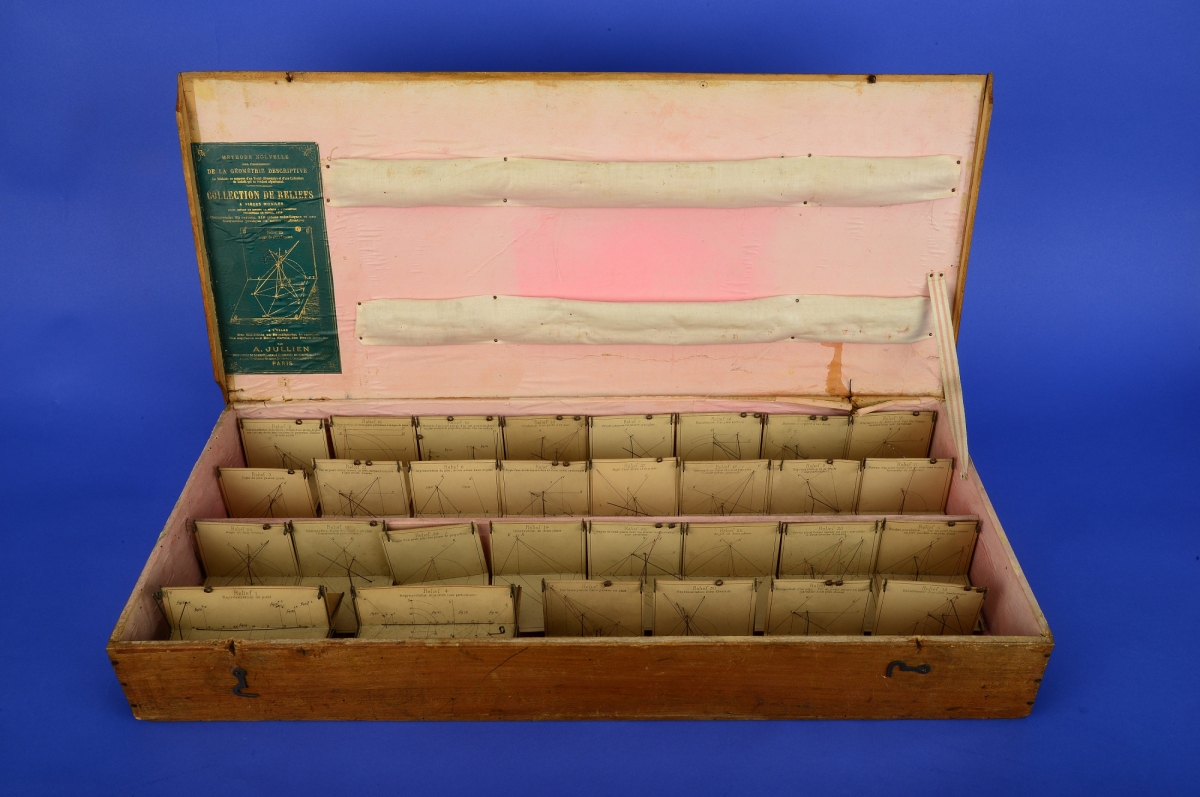- About MAA
- Membership
- MAA Publications
- Periodicals
- Blogs
- MAA Book Series
- MAA Press (an imprint of the AMS)
- MAA Notes
- MAA Reviews
- Mathematical Communication
- Information for Libraries
- Author Resources
- Advertise with MAA
- Meetings
- Competitions
- Programs
- Communities
- MAA Sections
- SIGMAA
- MAA Connect
- Students
- MAA Awards
- Awards Booklets
- Writing Awards
- Teaching Awards
- Service Awards
- Research Awards
- Lecture Awards
- Putnam Competition Individual and Team Winners
- D. E. Shaw Group AMC 8 Awards & Certificates
- Maryam Mirzakhani AMC 10 A Awards & Certificates
- Two Sigma AMC 10 B Awards & Certificates
- Jane Street AMC 12 A Awards & Certificates
- Akamai AMC 12 B Awards & Certificates
- High School Teachers
- News
You are here
Mathematical Treasure: Jullien Models for Descriptive Geometry
Fortification was the cornerstone (so to speak) of military defense in medieval and Renaissance Europe, and its importance continued into the early modern period. So when Gaspar Monge (1746–1818) developed a new method for rendering architectural drawings, the French government quickly started teaching it at its premier military and scientific schools, while simultaneously making the technique a state secret. Descriptive geometry uses vertical as well as horizontal projections of a three-dimensional object to show the geometric properties of the object, such as angles of inclination and intersection, which are necessary for accurate architectural designs. Projection, in the form of relief drawings, was not new. Monge’s innovation was presenting both the front and top view on the same sheet of paper (front view or the vertical projection on the top half of the paper, top view or horizontal projection on the bottom half). This allowed the use of Euclidean geometry to find geometric properties of the object. Within a decade or two, descriptive geometry was no longer classified, and the teaching of descriptive geometry became common in French and other European technical colleges, as well as at West Point, the United States Military Academy. Starting with Monge’s text Géométrie descriptive (1799), texts on descriptive geometry began to be produced in the early 19th century.
One of these second-generation texts was Cours élémentaire de géométrie descriptive by the French academic A. Jullien. To accompany his text, Jullien constructed a set of 30 models, or reliefs.

Box of 30 descriptive geometry models, ca 1880, Smithsonian Institution negative number DOR 2015-00774.
The reliefs show, in three dimensions, how the descriptive geometry plans were produced. They start with simple constructions, such as the representation of points and lines, and culminate in the representation of a generalized pyramid. The models are accompanied by a pamphlet describing each model in detail and were designed to follow the lessons in the text, which means that an instructor would have used them for illustration in the classroom. These models thus functioned as the Maple or Mathematica 3-D renderings of their day.
Relief 29 (below) shows the line of intersection of two planes, both of which are perpendicular to the vertical plane. The line of intersection is represented by the wire coming out of the vertical plane toward the viewer.

Relief 29, angle of intersection between two planes, Smithsonian Institution negative number DOR 2015-00810.
The Smithsonian National Museum of American History owns a complete set of Jullien models of descriptive geometry, produced around the mid to late 1880s. The third edition of Jullien’s text (1881) is available on Google Books and can be used in conjunction with the images of the models to learn the constructions of descriptive geometry. Information about the Jullien Models, as well as the pamphlet and descriptions and images of each relief, can be found at the online collections of the Smithsonian National Museum of American History, http://americanhistory.si.edu/collections/object-groups/geometric-models-jullien-models-for-descriptive-geometry.
Amy Shell-Gellasch (Montgomery College), "Mathematical Treasure: Jullien Models for Descriptive Geometry," Convergence (June 2016)




